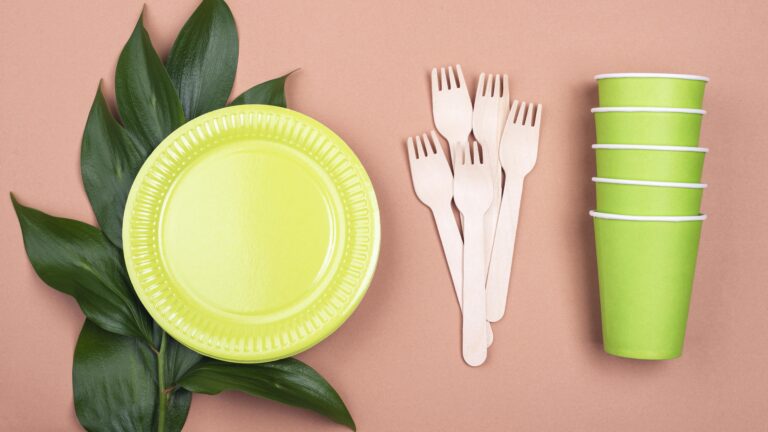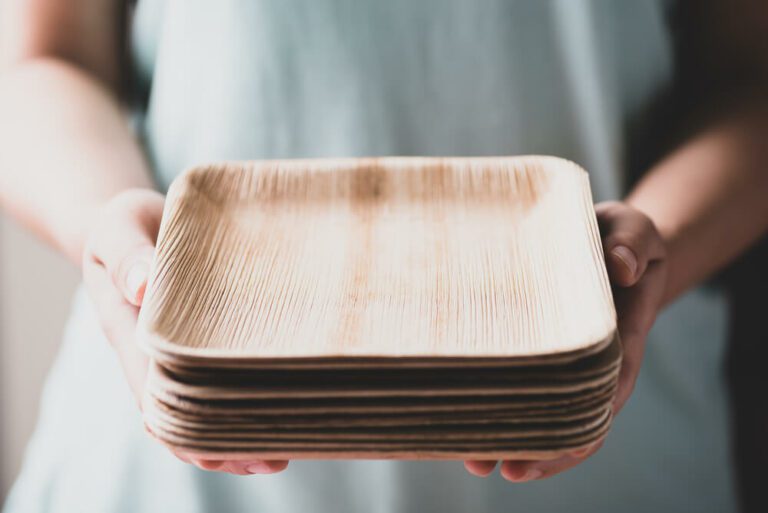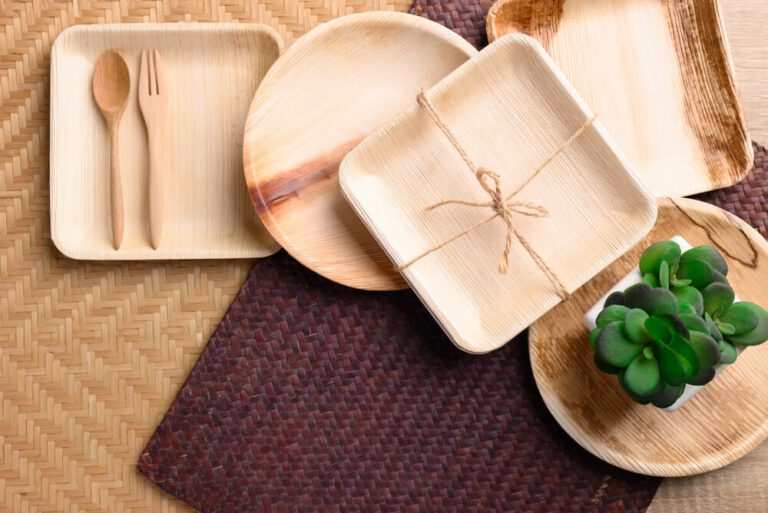Introduction
Imagine walking down a beautiful beach, feeling the sun on your skin and hearing the waves gently crashing. You see a sea turtle struggling with a plastic straw in its nostril while admiring nature’s splendour. This striking moment shows how plastic usage harms the ecosystem. Disposable straws symbolise our throwaway lifestyle, polluting, killing marine life, and overflowing landfills. You’re not alone in finding eco-friendly options to make a difference.
This blog post explores bamboo straws, a sustainable, inexpensive, eco-friendly, and time-saving choice. Join me on how to make bamboo straw- an adventure. We’ll learn how to make cheap, eco-friendly straws. Let’s roll up our sleeves, grab a cup of tea, and explore the fascinating world of bamboo straw production. This post will reveal how to make eco-friendly, affordable bamboo straws. You’ll learn how to make bamboo straws to help the environment. Ready? Let’s begin!
The Rising Need for Sustainable Alternatives
A. The Environmental Impact of Plastic Straws
Our disposable culture is symbolised by plastic straws. Plastic straws are used and discarded daily, creating massive amounts of waste that harms the environment. Plastic straws harm ecosystems globally. First, plastic straws pollute our oceans. Wind and water carry these lightweight things into rivers, lakes, and the ocean. Marine animals can absorb plastic straws and die. The heartbreaking images of marine turtles with straws in their nostrils or seabirds with garbage in their bellies are disturbing reminders of our plastic consumption. Plastic straws take centuries to disintegrate. This means that every straw ever made still pollutes our landfills and natural places. As plastic trash rises alarmingly, we need sustainable options to offset these effects.
B. Why Bamboo Straws Are a Promising Solution
Bamboo straws are promising eco-friendly alternatives. Bamboo is fast-growing and pesticide-free. It’s perfect for sustainable straws. Bamboo straws are biodegradable and compostable. Bamboo straws decompose in months, unlike plastic straws, which can take decades. For long-term sustainability, bamboo straws are resilient and reusable. Bamboo straws can last months or years with proper care, decreasing waste and single-use plastics. Using bamboo straws can help reduce plastic pollution. These straws are sustainable and eco-friendly, meeting our environmental obligation. We’ll discuss bamboo straw costs in the next section and how aware buyers may afford them.
Related posts you might be interested to read: Bamboo vs palm leaf plates which is more sustainable?
Understanding the Cost of Making Bamboo Straws
A. Materials and Tools Required for Bamboo Straw Making
Before considering cost, you must grasp bamboo straw supplies and tools. Bamboo—a versatile and ecological material—is the main material. Straws are made from bamboo stalks, which can be bought or grown locally. To make bamboo straws, you’ll need bamboo stalks and tools. They include a sharp knife or saw for cutting bamboo into appropriate lengths, sandpaper for smoothing rough edges, and a sealer like natural beeswax or food-grade varnish for longevity and hygiene. Luckily, bamboo straw-making ingredients and tools are economical. Locally sourced or bulk-purchased bamboo stalks are usually affordable. Sharp knives and sandpaper are popular household items or inexpensive hardware shop purchases.
B. Estimating the Costs Involved in the Production Process
Let’s break down bamboo straw production costs to obtain a better idea. The main cost factors are:
- Bamboo stalks: Variety, quality, and sourcing determine bamboo stalk prices. Bamboo is cheaper than other raw materials. Bamboo stalks cost a few cents to several dollars per piece, depending on quantity and provider.
- Tools and Gear: Bamboo straw-making instruments are inexpensive and commonly available. A knife, sandpaper, and sealer cost under $20.
- Labor: It may not cost much to Make bamboo straws may not cost much. If you scale up production and engage people, fair recompense for time and effort is crucial.
- Packing and Marketing: While not directly related to production, packaging and marketing your bamboo straws can add up. Sustainable packaging and creative branding may cost more, but they boost product attractiveness and marketability.
C. Cost Comparison: To Make Bamboo Straws vs. Plastic Straws
Compare bamboo straw prices to plastic ones. Plastic straws may look cheaper, but they cost the environment and human health more in the long term. Plastic straws, sold cheaply in bulk, may seem cost-effective.
Yet, pollution and the energy-intensive production process cause significant ecological and socioeconomic consequences. Plastic straws rarely include these expenditures. Bamboo straws are greener. Bamboo straws are reusable and biodegradable, making them a good long-term investment. Bamboo straws decrease plastic waste and environmental expenses.

Time Considerations in Bamboo Straw Making
A. Steps Involved to Make Bamboo Straws
To make eco-friendly bamboo straws, raw bamboo stalks must be processed. Time management requires process understanding.
Key steps:
- Bamboo Harvesting: Start by cutting mature bamboo stems to length. Remove the outer layer and nodes for a smooth straw surface.
- Hollowing the Bamboo: Carefully hollow out bamboo stalks to create a cylindrical tube. Carefully maintain diameters.
- Cutting and Shaping: Cut straws from hollowed bamboo. Smooth the ends to make them drinkable and safe.
- Sanding and finishing: Smooth rough edges with sandpaper. This procedure improves bamboo straw look and feel. Clean and dry bamboo straws. Before storing or using, let them air dry.
B. Time Breakdown for Each Step in the Process
While the exact time required for each step may vary depending on factors such as skill level and tools used, it’s helpful to have a general idea on how long does it take to make bamboo straws
- Harvesting and Preparing Bamboo: Cutting, eliminating nodes, and surface preparation take 10-15 minutes per stalk.
- Hollowing Bamboo: Depending on the method and bamboo thickness, hollowing bamboo stalks takes 5-10 minutes each straw.
- Cutting and Shaping: Depending on size and precision, cutting and shaping bamboo straws takes 5-10 minutes each straw.
- Finishing: Sanding bamboo string Processed bamboo stalks make eco-friendly straws. Time management demands process understanding. Crucial steps: Bamboo harvest: Cut mature bamboo stems to length. Smooth straw requires removing the outer layer and nodes.
- Hollowing Bamboo: Gently hollow bamboo stalks into cylindrical tubes. Watch diameters. Cut and shape hollowed bamboo straws. Smooth the ends for safe drinking. Sandpaper rough edges. This process enhances bamboo straw. bamboo straws. Air-dry before storing or using. Depending on the extent of sanding, straws may take 2–5 minutes to smooth.
- Cleaning and Drying: Bamboo straws can be cleaned in minutes and dried in hours or overnight, depending on environment and humidity.
Techniques for Affordable Bamboo Straw Making
A. Sourcing Bamboo: Where to Find Cost-Effective Materials
Making bamboo straws requires inexpensive supplies.
Bamboo sourcing methods:
- Bamboo Suppliers: Find local bamboo vendors or farmers. As there are no shipping or middleman expenses, buying directly from them can save money.
- Sustainable Agriculture: Investigate sustainable farming or bamboo cultivation organizations. These programmes sell bamboo stalks at low prices, helping local economies and the environment.
- Community Assets: Visit community gardens, botanical gardens, or bamboo groves. As part of their sustainability and community participation, they may sell bamboo stalks at a reasonable price.
- Internet Marketplaces: Use platforms that link bamboo vendors and buyers. To save money, shop around and buy in bulk.
B. Tools and Equipment: Budget-Friendly Options and Alternatives
Bamboo straw-making instruments are affordable. Use these budget-friendly methods:
- Upcycling and Reusing: Find tools at home or in second-hand stores. Get knives, sandpaper, and other supplies for bamboo straw production. Reusing tools saves money and encourages sustainability.
- Share or Borrow: If you need tools, ask friends, relatives, or neighbours. You might also share tool costs with other bamboo straw makers.
- DIY Options: Consider DIY tools. For instance, wrap sandpaper around a tiny piece of wood to make a sanding block or use a Dremel tool attachment to hollow out bamboo stalks faster.

C. Efficient Production Strategies to Minimize Costs
How much does it cost to make bamboo straws and efficient production processes can reduce expenses? Try these:
- Batch Production: Make bamboo straws in batches instead than individually. This optimises efficiency and reduces time and effort. Reduce waste by planning cuts. Use the entire stalk and reuse spare portions for other crafts to reduce
- waste.
- Quality Control: Keep rigorous quality control throughout production to avoid flaws and waste. Ensure each straw satisfies requirements to reduce rework and material use.
- Optimizing Resources: Use only the necessary sandpaper and sealant. Avoid waste to save money and the environment.
- Constant Improvement: Assess and enhance your production methods. Get customer or bamboo straw maker feedback to improve productivity and save money.
D. Treatment and Finishing Methods for Long-Lasting Straws
Bamboo straws need proper treatment and finishing to last.
Eco-friendly bamboo care:
- Natural sealants: Use natural sealants like food-grade varnish or beeswax to preserve bamboo straws. These chemical-free alternatives are non-toxic.
- Chemical preservatives: Avoid environmentally harmful preservatives and coatings. Choose eco-friendly organic alternatives. Before storing or using bamboo straws, thoroughly dry them. Proper drying reduces mould and bacteria growth and increases straw life.
- Care and reuse: Promote bamboo straw reuse and care. Encourage proper cleaning for hygiene and durability. These treatment and finishing procedures make eco-friendly, resilient bamboo straws that last and reduce waste.
Step-by-Step Guide: Making Your Own Bamboo Straws
Cleaning and Cutting Bamboo Stalks Customize and make eco-friendly bamboo straws. Preparing bamboo stalks for straw:
- Picking Bamboo: Choose strong, straw-sized bamboo stems. Choose healthy stalks.
- Washing Bamboo: Remove all debris, dust, and exterior covering from bamboo stalks. Use a moist cloth or brush to gently wipe the surface clean.
- Cutting Bamboo: Use a ruler or measuring tape to mark the appropriate bamboo straw length. Carefully cut bamboo at defined locations using a fine-toothed saw or sharp knife. Professionally cut straight and tidy. Shaping and Polishing Bamboo Straws
After preparing bamboo stalks, shape and polish them into useful straws. These steps:
- Hollowing Bamboo: Hollow bamboo stalks with a thin, pointed implement like a skewer, metal rod, or drill. Rotate the tool gently to remove the inner pith. Hollow out the entire straw. Maintain straw diameter throughout.
- Shaping Ends: To smooth the bamboo straw, trim both ends. Employ a sharp knife or sandpaper to shape and smooth the edges for safe drinking.
- Final Sanding, Smoothing, and Sealing Follow these final steps to polish and prepare bamboo straws:
- Sanding Straws: Sand bamboo straws’ exteriors using fine-grit sandpaper. This procedure smooths rough spots.
- Smoothing Inside: Smooth bamboo straw interior walls with a small piece of sandpaper or a round file. This prevents drinking-impairing splinters and rough edges.
- Sealing Straws (optional): Use a natural food-grade sealant to make bamboo straws last longer. Beeswax or organic coconut oil can protect straws from moisture.
Conclusion
Making bamboo straws offers numerous benefits such as eco-friendliness, affordability, and time-saving. Make bamboo straws and embrace a greener future by reducing plastic waste, customizing your own sustainable alternatives, and inspiring others to join the sustainable movement. Together, we can make a significant impact and significantly environmentally conscious world. Cheers to a greener future with bamboo straws!
Are you ready to make a positive impact on the environment while providing your customers with a sustainable alternative? Explore our wholesale offerings of high-quality bamboo straws today and join the movement towards a greener future.
Q 1: How can I source cost-effective bamboo for making straws?
A: Look for local bamboo suppliers, explore online marketplaces, or consider partnering with sustainable organizations that offer responsibly sourced bamboo materials at affordable prices.
Q 2: Are bamboo straws easy to clean and maintain?
A: Yes, bamboo straws are easy to clean. Use a cleaning brush to remove any residue after rinsing them with warm water and mild soap. Avoid soaking them for extended periods and allow them to dry thoroughly before storage.
Q 3: How long do bamboo straws typically last?
A: With proper care, bamboo straws can last for months or even years. Regularly inspect them for signs of wear and replace if necessary. They decompose because they are biodegradable when they eventually expire, so you can compost them.
Q 4: Can I customize the size and shape of bamboo straws?
A: Absolutely! One benefit of making your own bamboo straws is that you can customize them to your preferences.. You can adjust the length, diameter, and even shape them into unique designs to suit different beverages.
Q 5: Are bamboo straws safe for children to use?
A: Yes, bamboo straws are generally safe for children to use. However, parental supervision is recommended, especially for younger children, to ensure they use the straws properly and avoid any potential hazards.







